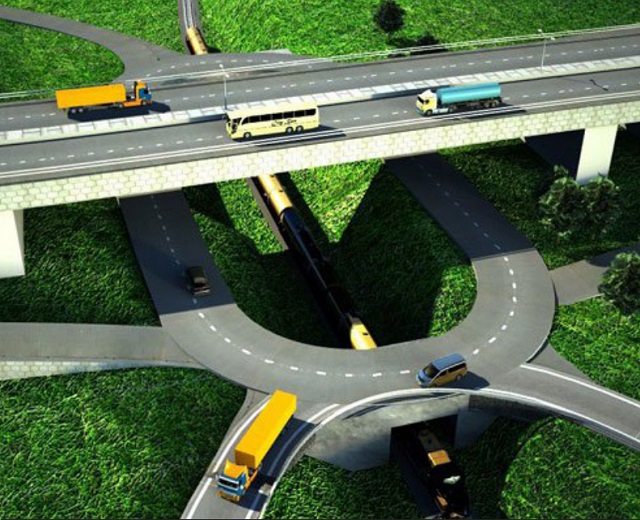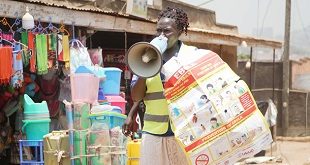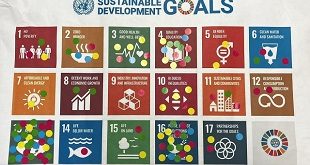
Needed today, won’t be ready by 2030
Kampala, Uganda | RONALD MUSOKE | The Uganda government on March 16 signed a US$229.5 million (Shs860 billion) financing agreement with the African Development Bank (AfDB) in the latest effort to raise money for the Kampala-Jinja Expressway.
The Kampala-Jinja Expressway is being touted as a highway that will cure the traffic jam nightmare between two of Uganda’s most important cities, the capital Kampala and Jinja about 80km away in eastern Uganda. When completed, it is expected to boost local industries in districts along its route like Wakiso, Mukono, Buikwe, Lugazi, and Jinja.
But a few days later, on March 23, frustration over lack of an expressway between the cities boiled over after an afternoon tropical storm flooded the Kyambogo area on the outskirts of Kampala and cut off traffic along the current Kampala-Jinja highway.
Ashraf Mayanja, a taxi driver, was among those caught up in the ensuing traffic jam. He told The Independent that it is frustrating that a journey of one hour to reach Jinja from Kampala takes him at least three hours.
He said that is about the same time it takes him to drive about 250km from Mbale in the east to Mukono near Kampala.
“If you reach Mukono at 6pm, you will be lucky to reach Kampala at 10pm,” he said. From Mukono to Kampala is just about 25km to Kampala, but it takes him another three hours.
For road users like Mayanja, the loan signing event should have been celebrated as another step to bringing closer the dream of getting a modern highway to link the capital, Kampala, to Jinja City and beyond in eastern Uganda.
While signing the AfDB deal, Matia Kasaija, the Minister of Finance, Planning and Economic Development, said the expressway would improve travel flow, reducing travel time to less than one hour. But the loan signing event has instead exposed how far the Kampala-Jinja Express highway is from becoming a reality.
That is because the total cost for the 95km project is about US $1.4 billion (Shs5.2 trillion). But, according to the Uganda National Roads Authority (UNRA), funding so far secured including the AfDB’s loan is about US$335 million of about 24% of the required funds.
The EU has already extended a grant of €90 million (US$106 million) while an additional US$ 90 million loan from the French Development Agency has been secured. UNRA officials say the plan is for the government to raise close to US$ 600 million from private funders making the road the first to be built in Uganda using a Public-Private Partnership mode. During the construction phase, however, any outstanding balance for the project cost will also be met by the government.
Under the PPP arrangement, a private contractor will build, finance and operate the project for 30 years under a DBFOT model to earn back their investment through a road tolling scheme. After 30 year, UNRA will take back the road.
“The Public-Private Partnership model will bring in private sector participation and financing of a key infrastructure in Uganda and will yield a significant economic return for the country with estimated net revenue of $2.1 billion over the 30-year concession period,” said Augustine Kpehe Ngafuan, the AfDB Country Manager for Uganda, who signed on behalf of the Bank.
With the agreement stipulating that at least 30% of subcontracting in the project would be awarded to local companies under the Buy Uganda Build Uganda (BUBU) policy, the project is expected to create at least 1,500 direct jobs during the construction phase and 250 jobs during the operational phase, Ngafuan said.
Money challenges
But challenges in raising money have frustrated the project whose initial preparation commenced with a feasibility study in 2010. A decade later, the project is still on the drawing board.
In December 2018 the Uganda National Roads Authority (UNRA) which is the executing agency, shortlisted four international consortia for the expressway.
They included the China Communications Construction Company Ltd and China First Highway Engineering Company Ltd, the KJ Connect (with Vinci Concessions as the lead member), Strabag/ICITAS/EGIS/AIIM/STOA with Strabag as lead member, and the CCKS Consortium of China State Construction Engineering Corporation Ltd, China Wu Yi Co. Ltd, Korea Expressway Corporation and SK Engineering and Construction.
But a year later, in September 2019, President Museveni ended that process when he invited another Chinese company, the China Railway 17th Bureau Group Company (CR17th), to also be considered. At around the same time, MPs from eastern Uganda questioned the government’s decision to use a PPP model on the expressway which they blamed for failure to secure funds for it.
MPs said the government should have borrowed money for the expressway in the same way it has done for roads in other parts of the country.
“Everywhere in the country we have got loans, now in the east you say PPP is unacceptable, we don’t want it we want answers on when are you going to build the road?” Speaker of Parliament Rebecca Kadaga who doubles as Kamuli Woman MP Kadaga said. That is when the government switched to borrowing portions of the money needed. But two years later, the private contractor is yet to be selected.
Allan Ssempebwa, UNRA’s publicist told The Independent on March 25 that construction of the expressway will begin once all the funding is secured. That will be around 2022, he said.
“The Procurement process is at Request for Proposal Stage and bidders were already prequalified and will be invited to submit technical and financial proposals,” he said, “UNRA awaits the government’s approval before proceeding to invite proposals which will be followed by selection of the preferred bidder.” The construction of the highway is expected to take at least five years to finish.
The 95Km expressway project comprises 77km of the Kampala-Jinja Expressway of 4+4 lanes for the first 32km, and 2+2 lanes for the remaining 45km with a design speed of up to 120km per hour. It also has a loop known as the Kampala Southern Bypass (KSB) which comprises an 18km urban expressway of 2+2 lanes with design speed of up to 100km per hour.
The highway is designed to relieve the current congestion and reliance issues on roads out of Kampala city and on the existing Kampala-Jinja highway. It will also cater for future traffic growth.
 The Independent Uganda: You get the Truth we Pay the Price
The Independent Uganda: You get the Truth we Pay the Price




good news in time